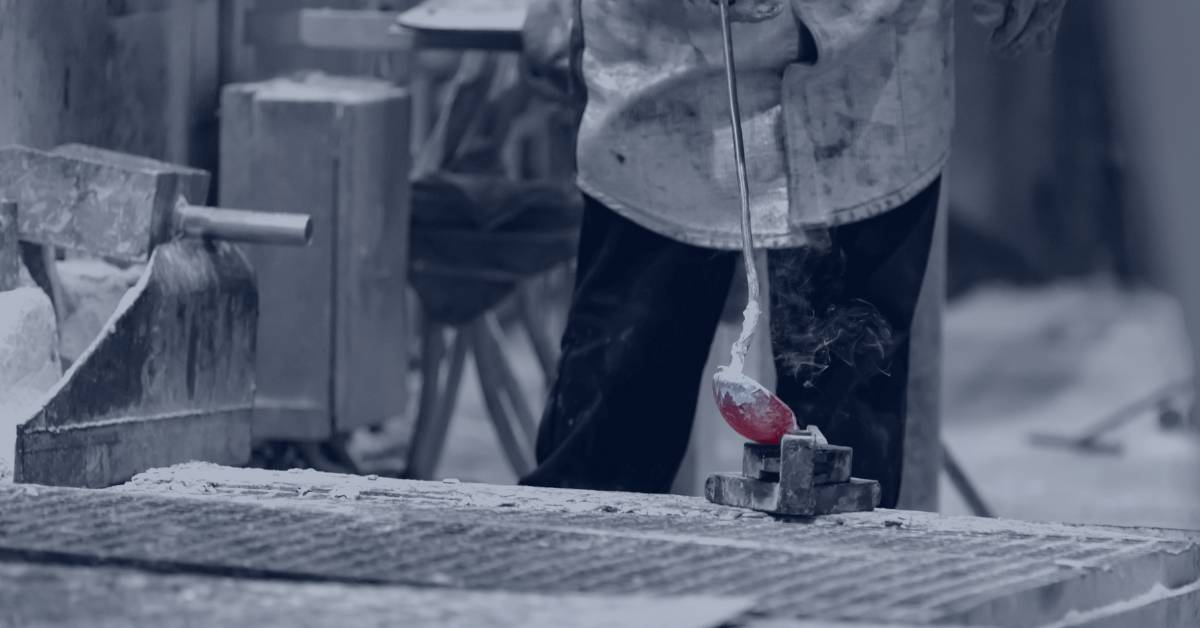The 3-Minute Rule for Aluminum Castings Company
Table of ContentsGet This Report on Aluminum Castings Company10 Simple Techniques For Aluminum Castings CompanyAluminum Castings Company for DummiesThe Best Guide To Aluminum Castings CompanySome Known Details About Aluminum Castings Company Aluminum Castings Company Fundamentals Explained3 Simple Techniques For Aluminum Castings CompanyAluminum Castings Company Things To Know Before You Buy
There are two primary types of die spreading made use of in the light weight aluminum casting industry: hot chamber die casting and cool chamber pass away spreading. The main distinction in between these approaches is exactly how the molten metal is provided to the mold and mildew. In warm chamber die casting, frequently used for reduced melting point metals, the melting pot is straight attached to the machine, and a bettor forces the material through a gooseneck right into the die tooth cavity.
Aluminum Castings Company Can Be Fun For Anyone
In these approaches, the mold and mildew is deliberately ruined or escaped in order to draw out the ended up aluminum spreading. Usual procedures under the classification of expendable mold and mildew spreading include (investment spreading),,, and investment spreading. When manufacturing personalized aluminum parts making use of expendable molds, makers put molten light weight aluminum or light weight aluminum alloys into the mold, which is then broken apart to launch the strengthened metal part.
The is one of the earliest and most favored types of light weight aluminum casting. It includes compacting specialty factory sand, usually enhanced with clay or resin, around a specifically crafted reusable pattern that figures out the shape and inner details of the finished aluminum product. The pattern system integrates risers and vents to manage the circulation of molten metal and to stop casting defects such as contraction porosity.
Aluminum Castings Company Things To Know Before You Get This

This mold and mildew is then preheated prior to the pouring of liquified aluminum or light weight aluminum alloy. As the metal loads the covering, it records the complex details and fine surface area finish of the mold. As soon as cooled down, the ceramic is mechanically or chemically escaped, enabling the elimination and splitting up of individual actors components.
Not known Facts About Aluminum Castings Company
Permanent mold spreading makes use of reusable metal mold and mildews and is perfect for mass manufacturing with regular high quality and much less waste. Expendable mold spreading utilizes single-use mold and mildews, like sand or foam, providing design adaptability and reduced tooling expenses for prototypes or brief runs. Die casting is best for creating high quantities of aluminum components that need tight tolerances, great information, and smooth surfaces.
The Toshiba Maker DC-J Series includes pass away casting makers appropriate for light weight aluminum. Recognized for their robust building and construction and high shot performance, these devices guarantee reliable and precise spreading (Core Making).

While light weight aluminum can be utilized in its pure kind, it is commonly alloyed with various other steels to enhance its residential properties or the buildings of the various other metals. These alloys provide enhanced performance for numerous applications. Aluminum alloys are categorized right into eight collection, numbered from one to 8. The very first digit(s) of the number indicate the key alloying component incorporated with aluminum.
The Ultimate Guide To Aluminum Castings Company
This alloying improves the toughness and solidity of light weight aluminum yet reduces its ductility and corrosion resistance. The 3000 series alloys are mostly alloyed with manganese.
Additionally, it features high ductility and an extremely smooth finished surface area. The 4000 collection alloys are alloyed with silicon, which lowers the melting factor and enhances fluidity. This makes it a prominent option for casting, as it is simple to form in its liquified state. The 4000 series is additionally generally utilized as a filler for welding and brazing applications.
The Aluminum Castings Company Ideas
This series is classified as a high-strength alloy, particularly fit for sheet and plate applications due to its outstanding weldability. Its resistance to deterioration from acids and antacid makes it optimal for use in rough and hostile atmospheres (Aluminum Melting and Casting). The 6000 series alloys are alloyed with both magnesium and silicon, supplying a balance of stamina, mechanical homes, and deterioration resistance
Handling the 6000 series requires specialized and sophisticated equipment, which can be complex and pricey. This series is recognized for its excellent corrosion and oxidation resistance, as well as its convenience of covering, treatment, and workability. The 7000 series light weight aluminum alloys are the greatest and most resilient amongst light weight aluminum types, with toughness similar to around two-thirds of industrial-grade A3 steel.
Not known Facts About Aluminum Castings Company
Zinc is the primary alloying aspect in the 7000 series, enhancing the firmness of the aluminum, although zinc's hardness is comparable to that of aluminum on the Mohs range. The 8000 collection aluminum alloys are mostly alloyed with tin, together with small amounts of copper and nickel (Metal Castings). While these alloys supply lower stamina compared to various other collection, they master machinability and use resistance
Aluminum cast heatsinks are electrically conductive, allowing them to be based efficiently. They are often cast with integrated attributes that reduce the demand for additional operations, such as added machining or assembly, resulting in further cost financial savings. Aluminum casting is often used to produce braces for both heavy-duty commercial devices and household devices.
The Greatest Guide To Aluminum Castings Company
The single-piece construction of light weight aluminum braces enhances their toughness and longevity, lowering the possibility of failing. If holes are called for, they can be included directly in the casting mold and mildew, decreasing the need for post-production ending up see post (https://www.openlearning.com/u/alumnmcstngs-t5hdoi/). Manufacturers have actually significantly embraced aluminum casting for golf devices because of its toughness, security, and convenience in shaping